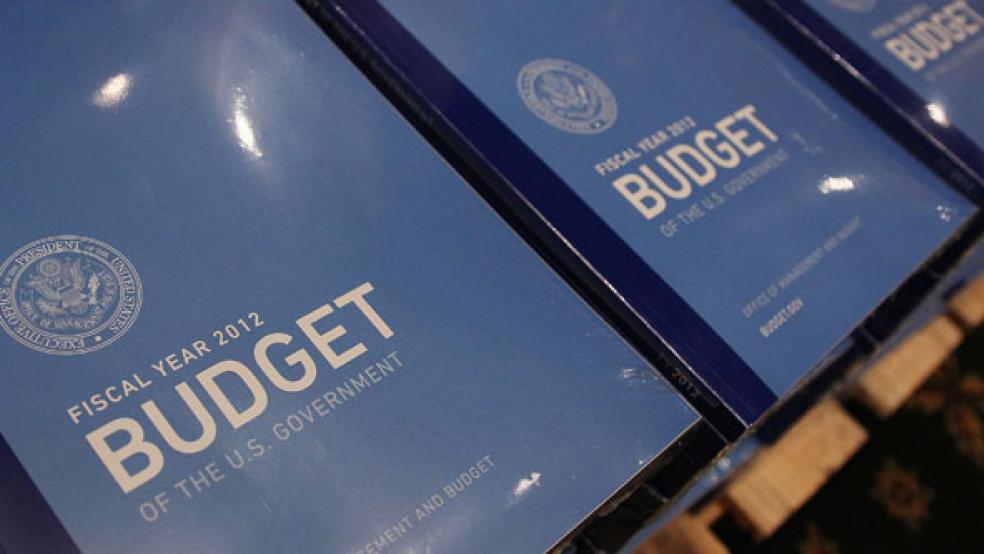In a tough election year, the White House Budget Office’s economic forecasts are best taken with a grain of salt, and that certainly was the case last Friday with the late-afternoon release of a mid-year assessment of President Obama’s budget policies.
For fiscal year 2012 that will end on Sept.30, the deficit is projected to be $1.211 trillion, or $116 billion lower than the $1.327 trillion deficit projected in February. But the White House Office of Management and Budget has been plotting the course of the government’s finances based on a series of ever shifting assumptions. Consider its latest forecast in the mid-session review that the economy will grow at 2.3 percent this calendar year, a huge shift from the poky 1.75 percent increase in gross domestic product during the first half of 2012.
To meet that rosy projection, GDP would need to expand by 2.85 percent over the next six months—despite Europe’s sovereign debt crisis and the uncertainty over the fiscal cliff, which means expiring tax breaks and automatic spending cuts at the start of next year that could further undermine economic growth possibly throwing the country back into another recession and send the deficit rising even further.
“If we look forward to second-half 2012 prospects, there's little reason for optimism,” wrote Nigel Gault, chief U.S. economist for IHS Global Insight, in a client note. “The second-half outcome is likely to be weaker than the average 2.0 percent growth rate that we expected in our July forecast. The economy has little momentum, and there are plenty of risks for businesses and consumers to worry about.”

The assumption about GDP forms the basis of the White House projecting that unemployment will drop from 8.2 percent to 7.9 percent by the end of the year, and that the federal deficit will total $1.2 trillion this year and $991 billion in 2013. Rising levels of productivity and employment usually generate additional revenues for the government while reducing expenditures.
Even though the specter of gridlock defines the current political climate, the White House based its upbeat projections on the assumption the President will reach agreement with congressional Republicans on a host of spending and revenue issues – despite the clear ideological differences between the two parties.
The White House estimates exceed those issued by private blue chip forecasters and Federal Reserve officials “due to the Administration’s assumption that its additional economic recovery proposals will be adopted,” the review said.
But a few months of economic data can easily reverse much of the forecast in the report released Friday.
In its mid-session review released a year ago, the White House took the unusual step of including an alternative set of economic assumptions. Because of the debt ceiling debate, the review was not issued until September, at which point data from June looked remarkably out-of-touch with an economy that many feared at the time was tipping back into a recession.
The alternative estimates in the administration’s 2011 review were significantly gloomier than the official ones, with unemployment increasing, GDP plunging, and $220 billion added to the deficit over the next decade. The actual unemployment rate averaged 8.98 percent last year, splitting the difference between the official and alternative assumptions as growth resumed in the latter part of 2011.
Putting faith in economic projections can be problematic for all administrations, a lesson the Obama team learned the hard way in 2009, amidst the economic crisis, when some officials predicted more than they could deliver.
Administration officials projected back then that unemployment would stay below 8 percent thanks to the $800 billion stimulus package, but the data used to make that calculation underestimated the extent of the downturn. Republican lawmakers have used that botched estimate to attack Obama and the stimulus ever since.
Not surprisingly, the new White House analysis, using adjusted data, credits the stimulus program for whatever progress has been seen since Obama entered the Oval Office.
“The [review] notes that much of the improvement in the economic picture since late 2008,” acting OMB Director Jeffrey Zients blogged, “when we were in midst of the worst recession since the Great Depression, resulted from the American Recovery and Reinvestment Act (Recovery Act) and other growth-creating legislation promoted and signed into law by the President.”




